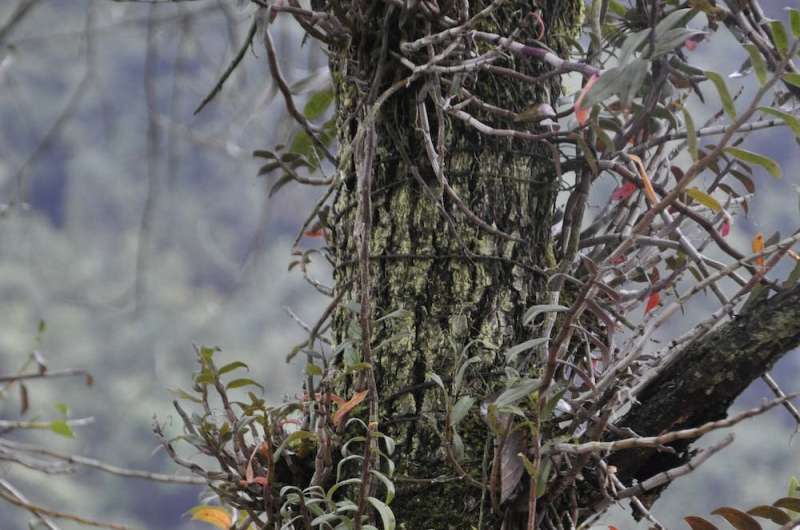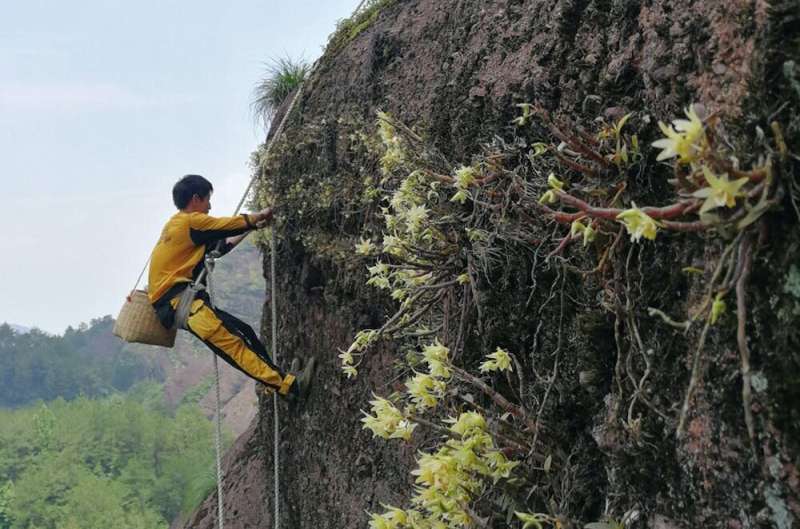China's lucrative orchid industry is a test for the nation's commitment to conservation

China is well known for its , a tradition that dates back thousands of years. These traditional Chinese medicines include many wild orchids, some quite showy.
Typically, orchids are in tea or soup. The health benefits vary depending on species; conditions for which orchids are used include .
Many of these medicinal orchids are among the 40-plus species in the genus Dendrobium. In recent decades, supplies of wild-sourced medicinal Dendrobium orchids have declined steadily, with . This is occurring in the limestone regions of Guizhou and Guangxi, the main area where Dendrobium has grown naturally, due to a combination of overharvesting by collectors and habitat loss.
I am an and lead several research projects in southwestern China, where the nation's first orchid nature preserve is located in a zone with a highly diverse assortment of orchid species. In 2017, China released a of endangered species found within its borders. It included 68 threatened Dendrobium species but did not mention overharvesting as a factor for their decline, even though I and other researchers have shown that is .
In my view, China's Biodiversity Red List as a threat to Chinese orchids. The government has taken encouraging steps on this issue recently, but its actions reflect challenges that are relevant to conserving many wild species, such as . The fate of China's Dendrobium orchids thus offers clues about what China is prepared to do to conserve its many endangered plants and animals.
From forests to cities
Farmers typically collect wild medicinal orchids to sell to middlemen or in rural markets. From there, the plants often move to bigger medicinal plant trading hubs or .
The total trade volumes of medicinal orchids are not well documented, but likely vary by species. Available records showed that peaked in the late 1980s at about 660 short tons (600 metric tons) yearly. More recent evidence suggests that wild medicinal Dendrobium are being between China and southeast Asian countries, probably because the plants' populations are dwindling in China.
Industrial cultivation
Although China faces many , it is working to position itself as an environmental leader. This is especially true for protecting wild species: In 2019, China sought and won the role of host for the planned 2021 Conference of Parties to the U.N. Convention on Biodiversity. That meeting, originally located in the Chinese city of Kunming, was in late 2022 after several COVID-19 delays.
Actions on orchid conservation reflect this push. On Sept. 7, 2021, China released a , which included about 1,100 species. The new list , in sharp contrast to the preceding version, which did not protect any orchids.
All 96 species of Chinese Dendrobium are on the list, which means that collecting them is subject to national . It remains to be seen how effectively these regulations will be enforced.
China also has encouraged production of commercially valuable animals and plants on farms to meet market demand and reduce pressure on wild species. For orchids and many other species, this strategy has produced .
Growers are now cultivating Dendrobium orchids, including Tie Pi Shi Hu (D. catenatum), one of four "fairy herbs" that are documented in ancient herbal books. This process is mostly done in industrial greenhouses. In 2020, China produced , with an estimated market value of ¥12 billion RMB, or about $US1.7 billion.
This output has only partly satisfied market demand, and orchid consumers view cultivated orchids as an inferior option. As a result, these plants command a much lower market price than their wild counterparts.
Gastrodia elata, a threatened orchid used in traditional Chinese medicine, is a good example. for this species were developed as early as the 1980s, but have not ended wild collection.

Forest-grown orchids
One alternative would be to ban use of these threatened orchids. But usage bans on other wild species have produced mixed results. Depending on factors such as market demand and species biology, .
It has been more productive for China to supplement mass orchid cultivation by raising high-value medicinal and edible plants under the canopy of well-managed native forests. These cultivation operations, which could be called "forest grown" or "forest farmed," are because farmers can adopt harvesting methods that enable the plants to persist and reproduce. is an example of this approach.
Forest-grown Dendrobium farming is popular now in . The provincial government is encouraging it as a way of reducing poverty.
Forest farming helps producers save money by eliminating or reducing the need for pesticides. In turn, farming without chemicals enables them to sell their plants in organic and other niche markets. It also helps to conserve the target species and the forests where they grow, and preserves native forest diversity. Promoting forest farming can drive interest in forest stewardship and raise awareness about indigenous plants.
This strategy also has some disadvantages. Plants grow more slowly under forest canopies than in shade houses, and yields generally are lower. This means that forest-farmed products must be sold at a premium to be profitable. For now, I believe these semi-wild cultivation operations should be considered experimental.
Conserving high-value plants while also supporting local livelihoods will require officials to think about both . If China can find a way to achieve sustainable use of medicinal orchids, it could set a conservation model for other countries that face similar challenges.
Provided by The Conversation
This article is republished from under a Creative Commons license. Read the .![]()




















